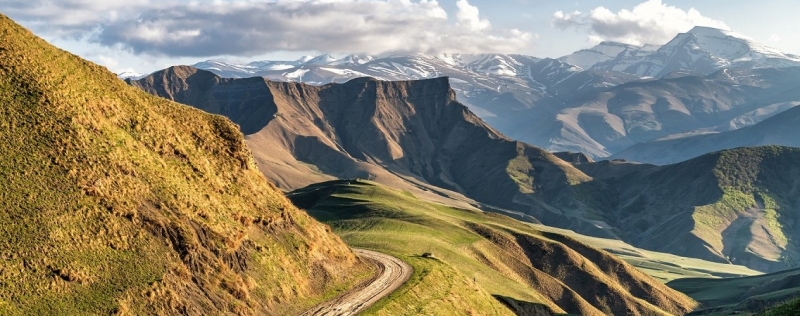
Incredible landscapes, rivers with emerald water, stone citadels, abandoned mountain settlements – all this is in Dagestan, which has become popular among tourists in recent years.
Where to go if you are just starting to discover this region? It is impossible to describe all the sights of the republic in one article, but we will tell you about the most important ones.
When to go
The best time to travel around Dagestan is from May to October.
It often rains in the region in late autumn. Heavy rains wash out roads, making it impossible to get to mountain villages. During the rainy season, you should not go to the Samur Forest because of the large number of snakes. In rainy weather, the Karadakh Gorge, popular with tourists, is prohibited – the water level there can rise sharply.
In spring there are often fogs that prevent you from enjoying natural beauty. It’s cold in the Republic in winter: at night the temperature in mountainous areas drops to −20 °C.
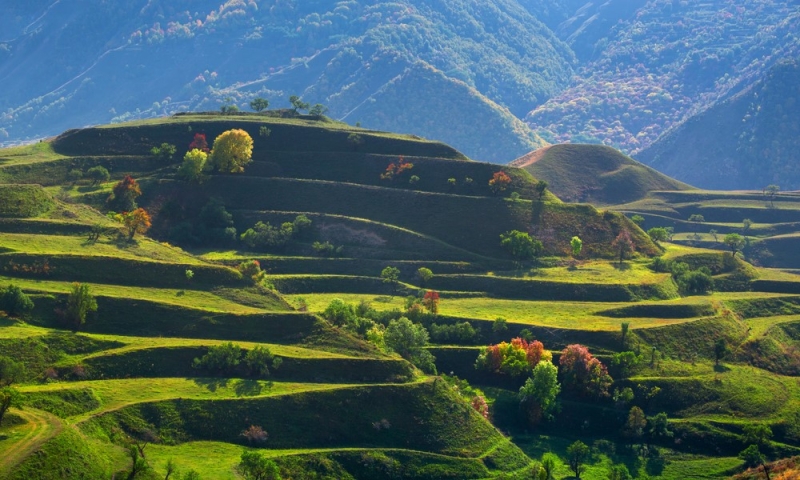
How to get there
There are direct flights to Dagestan from many Russian cities. You can fly to Makhachkala from Moscow, St. Petersburg, Novosibirsk, Nizhny Novgorod, Sochi, Mineralnye Vody – and the list is far from complete. Flight time from Moscow and St. Petersburg is 3 hours 30 minutes. The cost of air tickets from the capital starts from 9,000 rubles round trip*.
Trains to Makhachkala depart daily from Moscow from Paveletsky Station. The minimum travel time is 1 day 15 hours, one-way ticket prices start from 2,300 rubles*.
You can also get to Dagestan by your own car or bus, the journey from the capital will take more than a day.
How to move around the region
To get to know Dagestan better, travelers most often take excursions. There are many travel companies and private guides in the region who offer day trips.
It is difficult to reach the main attractions of the region by public transport; they are located far from cities and large villages. Thus, Gamsutl, popular among travelers, is a 40-minute drive from the large village of Gunib. You can get to it by minibus from Makhachkala, and then arrange with one of the local residents to take you to the place.
Another option is to rent a car with a driver in Makhachkala. The taxi driver who meets you at the airport will probably offer his services as a guide. Or you can ask any passerby in Makhachkala – he will definitely recommend someone who will take you to the location.
We recommend renting a car and driving in Dagestan if you are an experienced driver and are accustomed to serpentine roads. The mountainous landscape here is unpredictable, and due to the weather, landslides occur in different places. Plus, there are local driving peculiarities: people here like to drive at high speed, with sharp maneuvers.
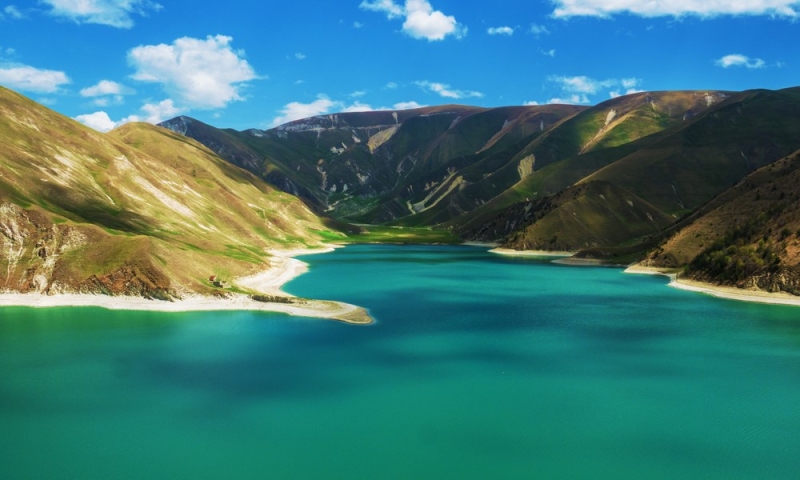
Where to stay
Makhachkala is the starting point for travel throughout the region. The city has many cozy hotels with quality service. Here are a few of them.
“Fortress” (rating 8.6) – from 2,500 rubles* per night for room and breakfast. The hotel is located 500 m from the Caspian Sea, a walk to the coast will take 10–15 minutes.
Jacques (rating 9.3) – from 6,000 rubles* for a double room with one bed. On the 10th floor of the hotel there is a panoramic restaurant, the terrace of which offers views of the city and mountains.
“Monto” (score 10) – from 6,500 rubles* per night for two with breakfast. The hotel has a rooftop restaurant, massage rooms, free sauna and hammam.
What to see in Dagestan
Sulak Canyon
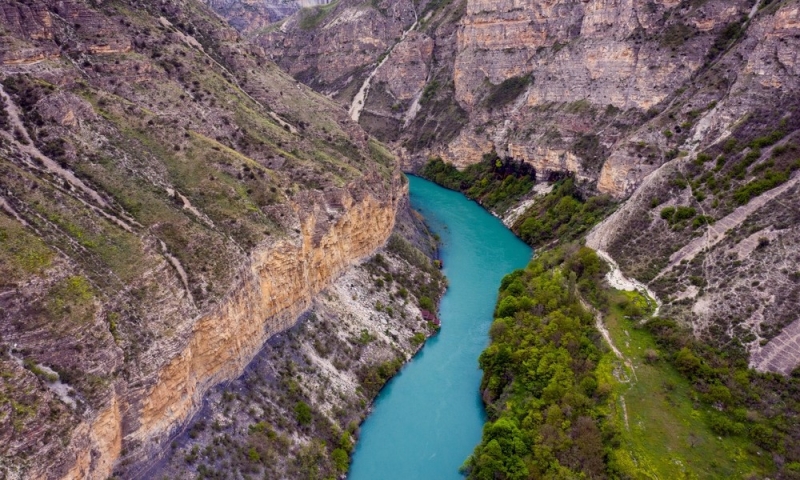
This river valley with steep slopes is located 100 km from Makhachkala. Sulak Canyon is No. 1 on the list of natural attractions of Dagestan.
Getting here on your own is dangerous: the route goes along a mountain serpentine. There are no guardrails along most of the road, and there is an abyss right below it. We advise you to entrust the steering wheel to an experienced driver who knows the area and enjoy the views. The road to the canyon is an attraction in itself. With every turn and change of altitude, nature will gradually transform.
Part of the route passes through the territory of the Miatlinskaya hydroelectric station. At the checkpoint, all travelers have their documents checked, so don’t forget to take your passport. Keep in mind that you will have to stand in line of cars from 20 minutes to an hour. There is no need to order a pass in advance.
The canyon has an interesting landscape: there are not many trees here, the rocks consist of yellowish-brown limestone, sandstone and marl. Travelers are usually surprised by the color of the water of the Sulak River at the bottom of the canyon – from light emerald to rich green. According to one version, this shade of water is given by limestone, which is contained in the rock.
The canyon is beautiful from any point. One of the best places for viewing is in the village of Dubki. On its outskirts there is an observation deck, from where the gorge appears from a height of 800 m.
Near the Sulak Canyon there is Chirkey Reservoire. You can take a boat ride along it – this service is offered by local residents. At the time of writing, a boat trip costs 500 rubles per person.
Barkhan Sarykum
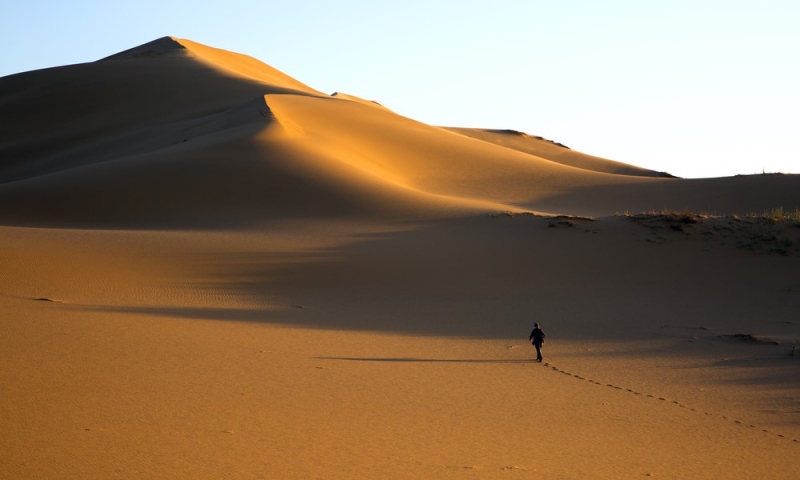
Dagestan is primarily known as a mountainous region, but the most unexpected natural areas are represented here. 18 km from Makhachkala there is even a dune – a sandy hill that forms in deserts. Its area of 600 hectares can be compared to 840 football fields.
Barkhan is the territory of the reserve. Admission is paid: a ticket costs 50 rubles for adults and 25 rubles for children. There is a staircase along the sand, you cannot leave it. Any human step outside the route can harm the unique ecosystem.
As befits a desert, it is hot here, especially in summer: the purest sand reflects the sun’s rays, and the air heats up to +60 °C. Therefore, it is better to come here in the morning or late afternoon.
Interesting fact: the scene with the buried Said from “White Sun of the Desert” was filmed on the Sarykum dune.
Abandoned village of Gamsutl
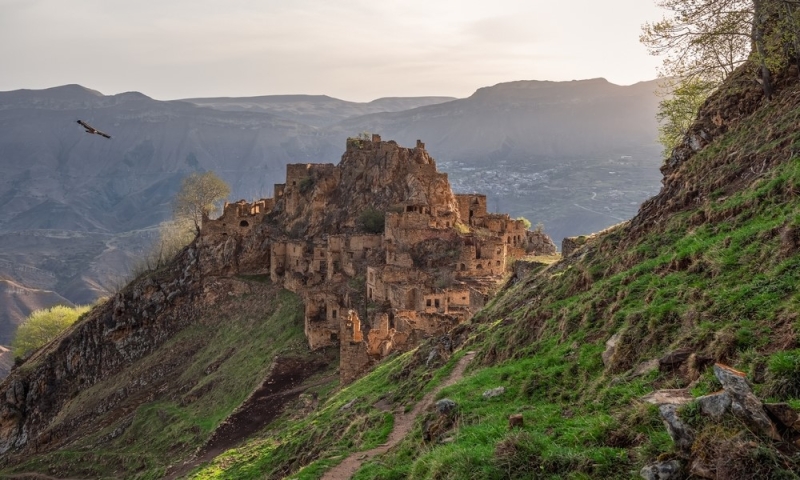
Gamsutl is located at an altitude of 1,500 m above sea level. The guides say that the fortress village is more than two thousand years old. Looking at old houses, this figure is easy to believe.
Half a century ago the village was lively: a kindergarten and an elementary school were open, and a small store was opened. But in the 80s, people began to leave the ancient sakli (as the dwellings of the Caucasian highlanders are sometimes called), and settled in territories that were more convenient for life. Only one person stubbornly refused to move. He lived alone in the village until his death in 2015.
It takes three hours to drive from Makhachkala to the foot of the mountain, where the abandoned village is located. There is no access to the village itself; you will have to climb several kilometers on foot. You definitely won’t go astray: the path is well trodden and there are signs. Half of the route can be covered in small SUVs; tourists are offered this service.
In guidebooks, Gamsutl is called a ghost village, because of this there are expectations that there is no one in the settlement. But still, this is one of the main attractions of the region, so be prepared that dozens of other travelers will come to Gamsutl at the same time as you.
A walk through the village can become an exciting quest to find religious symbols. Representatives of different religions lived in the village. On the walls of houses, above doors and on tombstones you can see crosses, Arabic inscriptions and even six-pointed stars.
Architecturally, Gamsutl is fragile: the mountaineers held together the stone walls with clay, and covered the roofs of the house with beams, firewood and hay. The buildings are gradually being destroyed. Historians predict that without restoration the village will exist no more than 10 years.
Khunzakh and surroundings
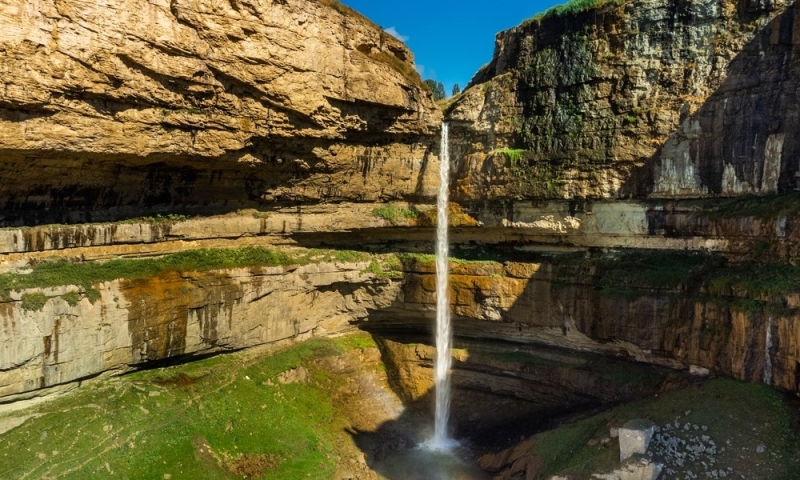
In the Khunzakh region you will again be surprised at how diverse the nature of Dagestan is. The landscapes of this part of the region are often called Martian.
The calling card of these places is Tsolotlinsky Canyon in the village of Khunzakh. The Tobot and Itlyatlyar rivers flow here, forming two waterfalls 70 m high. At the edge of the canyon there is a breathtaking view of the surrounding mountains.
You can come to Khunzakh at any time of the year, it will always be picturesque. If you want to see the waterfalls in full flow, plan your trip for May or June. During these months, the snow melts in the mountains, and the water in the Tobot River rises to its maximum. In winter it freezes, but water continues to flow inside. Tourists can get close to the ice block and hear the roar from the fast flow.
Next to the canyon there is an architectural monument that history buffs will definitely appreciate. This is a stone Araninskaya fortress, built during the Caucasian War in the 19th century.
A mandatory stop on the way to Khunzakh is Matlas plateau. From the edge of the cliff, panoramic views of the valley, rivers, rocks, mountain ranges and villages located below open up. Here you will hear the sound of water, and then notice two deep waterfalls in the gorge.
A small mosque made of natural stone and a monument consisting of two stone pillars fit organically into the landscape of the Matlas plateau. It is dedicated to Hadji Murat, one of the most famous mountain leaders.
If you travel around the Khunzakh region, be sure to take a walk along Stone Bowl. This is a mountain gorge with several vaulted halls that are connected by small passages.
Derbent
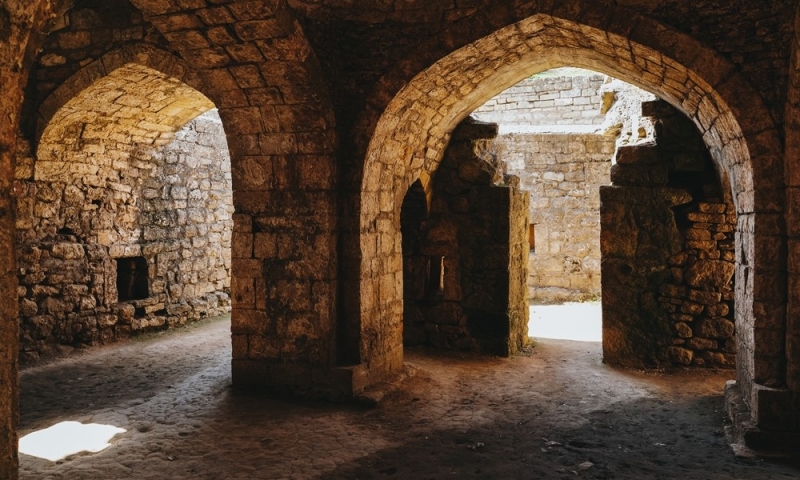
Derbent is called the southern capital of Dagestan. It is a large city with a population of 125,000 people and 2,000 years of history.
It’s easy to get here on your own. You can get there from Makhachkala by train. The fare is 133 rubles, the journey will take you 2 hours 48 minutes. A taxi from Makhachkala to Derbent will cost from 2,500 rubles. Minibuses travel from the Southern Bus Station of Makhachkala to Derbent; they depart when they are full. At the time of writing, a ticket cost 250 rubles.
The main thing in the city is Naryn-Kala fortress. The citadel, located on a high hill, “blocks” the path to Dagestan from the south. Entrance to the fortress for adults costs 150 rubles, for children – 50 rubles. Inside you can see the remains of a palace, a khan’s bathhouse with clay domes, a medieval zindan prison and a huge cistern carved into the rock. From the height there is a view of the entire city and the Caspian Sea.
A must-do on a trip to Derbent is a walk through magalas, as the city’s neighborhoods are called in Arabic. This is a type of development where houses with flat roofs are connected to each other and form narrow streets.
Inside the mahals there is the oldest mosque in the country – Juma Mosque. It has an unusual architecture: the vaults are supported by 40 massive columns, the passages have a lancet shape.
Finally, near Derbent there is the world’s only effect missile-carrying aircraft of Project 903 “Lun”. The giant, the size of a five-story building, was intended to fight surface ships. Now it is located near the village of Avadan and attracts dozens of tourists every day.
Auls Goor and Kakhib
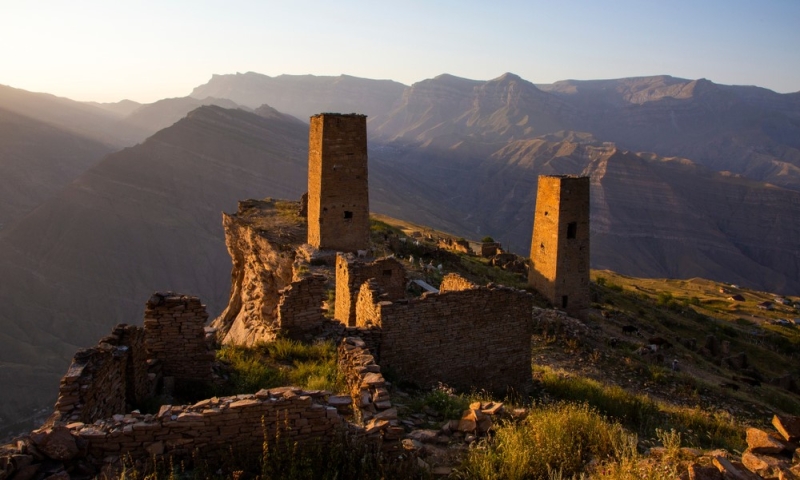
These are locations close to each other, in which you will learn more about the life of the Dagestan highlanders and see unique fortifications – watchtowers.
In these places you can find similarities with other abandoned villages. However, their landscapes are different: if Gamsutl is the tip of the mountain, then the ancient Kakhib merges with the slope. Travelers who love vast spaces with rocks, sheer precipices and sharp drops will especially like it here.
Old Kakhib is another example of defensive mountain architecture. The abandoned village is located on a steep cliff opposite the new village, with which it is shared by a gorge.
The mountain village of Goor is located in the Shamilsky district, it takes three and a half hours to get there from Makhachkala. The village is located at an altitude of about 1,500 m on the slope of a mountain. This is a defensive complex of the late 17th century, which consisted of seven towers and residential buildings. Four towers, including the largest, 25 meters high, are now destroyed.
Kala Koreish
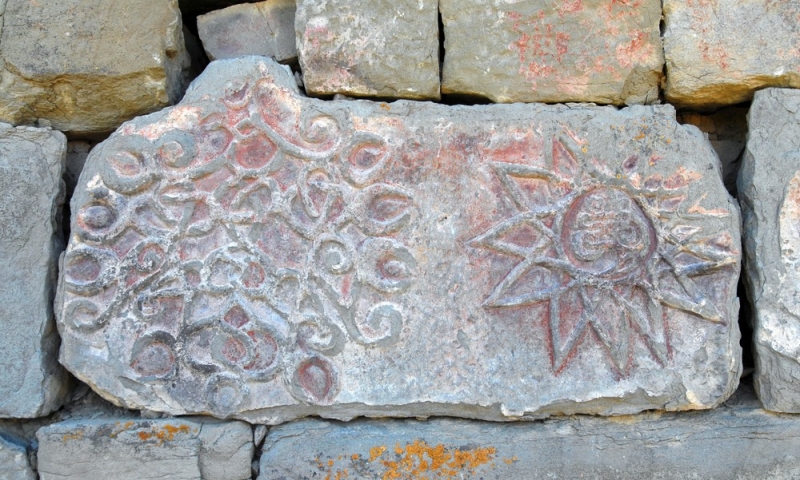
There are locations in Dagestan that are just gaining popularity among travelers. The main one of these destinations is the village-fortress of Kala-Koreish.
It, like Gamsutl or Goor, is often called a ghost, although the village is not abandoned: there is one local resident who looks after the surviving ancient monuments.
The fortress is located on a mountain with two deep gorges. The guides say that it was here that the first Muslim settlement in Russia was located. The “Fortress of Quraysh” was the capital of the Kaitag utsmiystvo. Quraish is an Arab tribe from which the Prophet Muhammad is believed to have descended.
It was from Kala-Koreish that Islam began to spread throughout the North Caucasus. The city has preserved a mosque, signal towers, a mausoleum of sheikhs and burial grounds, beautiful terraces descending from the mountain slopes.
When planning a trip, make your hotel reservations in advance. OneTwoTrip offers more than two million accommodation properties worldwide.
*Prices are current at the time of publication.

